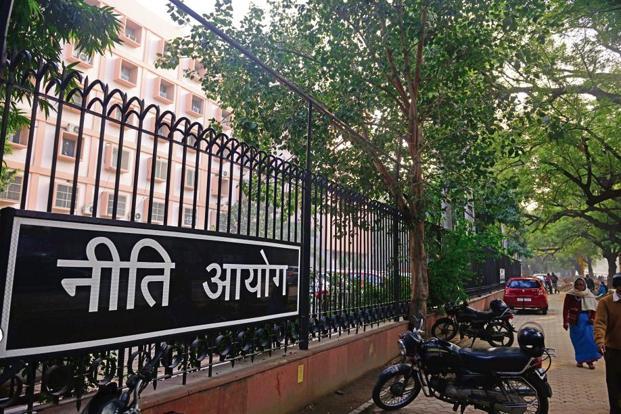GDP higher during Narendra Modi-led NDA: NITI Aayog
 NEW DELHI : A new government-commissioned study that provides gross domestic product (GDP) data as per the new series, with the baseline of 2011-2012, shows that India achieved higher growth rates than previously thought from 2003-2004 to 2012-2013.
NEW DELHI : A new government-commissioned study that provides gross domestic product (GDP) data as per the new series, with the baseline of 2011-2012, shows that India achieved higher growth rates than previously thought from 2003-2004 to 2012-2013.
Over the last three years, economists and policy-makers have questioned the government’s ability to compare India’s GDP growth over a long period of time. This is because the Central Statistics Office (CSO) changed the method by which it calculated GDP in 2014-15. The CSO essentially changed the base year for calculation from 2004-2005 to 2011-2012. All GDP data released from 2015 onwards used the new methodology.
However, the Modi government has for the last three years not released what economic experts call the ‘back series data’, which is essentially calculating what India’s GDP would have been in the earlier years (before it changed the way it calculated the GDP) using the new methodology.
A recently released study on ‘real sector statistics’ – constituted by the National Statistical Commission, which comes under the Ministry of Statistics and Programme Implementation – provides this back-series data going all the way back to 1994-95. This, consequently, allows for a comparison of growth trends between the two different methodologies (2004-2005 and 2011-2012).
Meanwhile, NITI has claimed that in the past four years strong foundations have been laid for “sustained high and inclusionary growth” for the future. “Growth rate under four years of Modi government is still higher than the growth rate of last four years of UPA.
This is being managed despite the pernicious legacy of massive NPAs, de- leveraging of commercial bank credit and uncertain global trade environment,” Kumar said on Twitter.
The sub-committee of the National Statistical Commission (NSC) on real sector statistics which reportedly claimed that going by revised GDP measures, the economic growth touched double digits — 10 per cent — during UPAs rule in 2006-07, Kumar in a series of tweets tried to clear air about these figures.
It was reported in a section of media that according to a report of NSC sub-committee, the average economic growth rate was 8.87 per cent during UPA`s first term in 2004-09. This fell to 7.39 per cent during its second term in 2009-14. The report further claimed that in comparison to the UPA, the average growth rate during NDA`s first four years (2014-18) was 7.35 per cent.
“Reference this morning`s news report about NSC sub-committee`s estimates of GDP growth series with 2011-12 base. These are yet unofficial. However, the following facts are clear: Higher growth rate in 2009-2011 and in previous years was funded by untenable fiscal deficit and reckless expansion of commercial bank credit which was surely unsustainable. This led to a dramatic economic collapse and growth floundered spectacularly in last 3 years of UPA II,” Kumar said.
India’s GDP growth rates (FY’05 to FY’18)
| FY | GDP (2004-05 baseline) | GDP (2011-12 baseline) |
| 2004-05 | 7.5 | 8.15 |
| 2005-06 | 9.5 | 9.60 |
| 2006-07 | 9.7 | 9.70 |
| 2007-08 | 9 | 10.23 |
| 2008-09 | 6.7 | 4.15 |
| 2009-10 | 8.4 | 8.84 |
| 2010-11 | 8.4 | 10.78 |
| 2011-12 | 6.5 | 6.96 |
| 2012-13 | 5 | 5.46 |
| 2013-14 | 6.6 | 6.39 |
| 2014-15 | 7.2 | |
| 2015-16 | 7.6 | |
| 2016-17 | 7.1 | |
| 2017-18 | 6.7 |
He also pointed out that the highest ever growth rate during 1987-89 Rajiv Gandhi period was also debt funded and led to the disastrous collapse of economic growth in 1990-92.
“Likewise, highest ever growth rate during 1987-89 Rajiv Gandhi period was also debt funded and led to disastrous collapse of growth in 1990-92 and the unmitigated external account crisis that forced India to physically transfer its gold reserves to avoid a debt service default,” Kumar said.(With Agency Inputs ).

